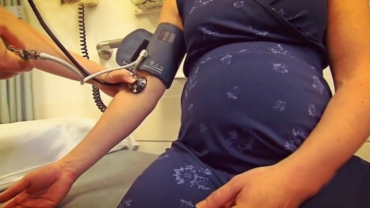False pregnancy in humans is less common, and may sometimes be purely psychological. It is generally estimated that false pregnancy is caused by changes in the endocrine system of the body, leading to the secretion of hormones that cause physical changes similar to those during pregnancy.
Some men experience the same illnesses as a woman would experience while pregnant when their partner is pregnant (see Couvade syndrome), possibly caused by pheromones that increase estrogen, prolactin, and cortisol
The symptom of pseudocyesis are similar to the symptoms of true pregnancy and are often hard to distinguish from it. Such natural signs as amenorrhoea, morning sickness, tender breasts, and weight gain may all be present. Many health care professionals can be deceived by the symptoms associated with pseudocyesis. Research shows that 18% of women with pseudocyesis were at one time diagnosed as pregnant by medical professionals.
The second most common physical sign of pseudocyesis is menstrual irregularity (50–90%). Women are also reported to experience the sensation of fetal movements known as quickening, even though there is no fetus present (50–75%). Other common signs and symptoms include gastrointestinal symptoms, breast changes or secretions, labor pains, uterine enlargement, and softening of the cervix. One percent of women eventually experience false labor.
Pseudocyesis is not known to have a direct underlying physical cause and there are no general recommendations regarding treatment with medications. In some cases, however, the patient may be given medications for such symptoms as the cessation of menstruation.
When some patients with pseudocyesis have underlying psychological problems, they should be referred to a psychotherapist for the treatment of these problems. It is important at the same time, however, for the treating professional not to minimize the reality of the patient's physical symptoms.
The treatment that has had the most success is demonstrating to the patient that she is not really pregnant by the use of ultrasound or other imaging techniques.
- 3904 views













